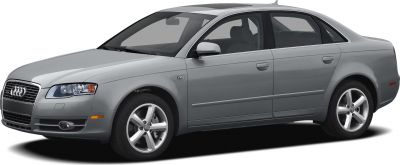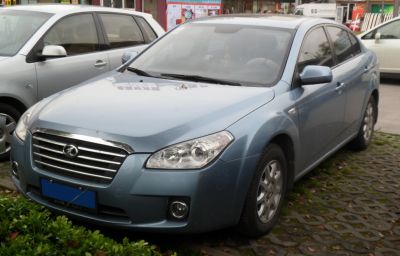 1989 Renault 21 (B48) Dimensions, Size & Specs
1989 Renault 21 (B48) Dimensions, Size & SpecsMeasurements of the 1989 Renault 21, engineered for optimal performance and comfort
| Dimensions | |
|---|---|
| Length: | 4530 mm178.3 in14.9 ft |
| Width: | 1730 mm68.1 in5.7 ft |
| Height: | 1415 mm55.7 in4.6 ft |
| Trunk Capacity: | 460-490 liter16.2-17.3 cu ft |
| Weight Specifications | |
| Curb Weight: | 985-1350 kg2172-2976 lbs |
| Maximal permitted Weight: | 1430-1800 kg3153-3968 lbs |
| Tire Specifications | |
| Rims Sizes: |
|
| Tire Sizes: |
|
The Renault 21 (B48), produced between 1989 and 1994, is a mid-size sedan that combines practical dimensions with versatile performance. Measuring 4530 mm (178.3 inches) in length, 1730 mm (68.1 inches) in width, and 1415 mm (55.7 inches) in height, the Renault 21 offers a balanced size suitable for both city and highway driving. The vehicle's curb weight ranges from 985 kg (2172 lbs) to 1350 kg (2976 lbs), depending on the specific configuration, while its maximum weight capacity extends from 1430 kg (3153 lbs) up to 1800 kg (3968 lbs), accommodating various passenger and cargo loads.
One of the highlights of the Renault 21 sedan is its spacious luggage compartment, which provides between 460 to 490 liters (16.2 to 17.3 cubic feet) of cargo volume. This sizable trunk space enhances the vehicle’s practicality, making it ideal for families or drivers requiring generous storage during travels.
The car rides on multiple rim sizes, including 13, 14, and 15 inches, which support corresponding tire options such as 175/70 R13, 195/55 R15, 185/65 R14, 185/55 R15, and 185/70 R13. These options afford a good balance between comfort, handling, and road grip.
Overall, the 1989-1994 Renault 21 (B48) stands out as a functional sedan offering solid interior space and adaptable tire configurations, making it a practical choice for those interested in a reliable mid-size car from the late 20th century.
Discover the standout features that make the 1989 Renault 21 a leader in its class
Have a question? Please check our knowledgebase first.
The Renault 21 (B48) sedan, manufactured between 1989 and 1994, has a length of 4530 mm (178.3 inches), width of 1730 mm (68.1 inches), and height of 1415 mm (55.7 inches). These dimensions help the car maintain a balanced presence typical for mid-size sedans of its era, offering ample interior space without compromising maneuverability in urban settings.
The curb weight of the Renault 21 (B48) ranges between 985 kg to 1350 kg (2172 to 2976 lbs), depending on the exact model and options. A lighter curb weight generally contributes to better acceleration, fuel efficiency, and nimble handling, while heavier versions may offer increased stability and comfort. This range ensures the Renault 21 can cater to different driving preferences and equipment levels.
The Renault 21 (B48) provides a luggage capacity ranging from 460 to 490 liters (16.2 to 17.3 cubic feet). This volume is quite generous for a sedan of its class and era, accommodating medium to large suitcases or shopping loads with ease. Its practicality makes it suitable for family trips, daily commuting, or errands, offering flexible space without compromising passenger comfort.
The Renault 21 (B48) comes with various rim sizes including 13, 14, and 15 inches, and tire sizes such as 175/70 R13, 185/70 R13, 185/65 R14, 185/55 R15, and 195/55 R15. Smaller rims with taller sidewall tires usually provide a softer ride due to better shock absorption, whereas larger rims with low-profile tires can improve handling and cornering at the cost of ride comfort. This variety allowed owners to choose setups suiting their driving style.
Yes, the Renault 21 (B48), with a length of 4530 mm (178.3 inches), width of 1730 mm (68.1 inches), and height of 1415 mm (55.7 inches), fits comfortably into a standard single-car garage. Most garages measure approximately 2.7 to 3 meters wide (8.8 to 9.8 feet) and 5 to 6 meters long (16.4 to 19.7 feet), which provides ample clearance for the car plus room to open doors. Owners should ensure enough space for comfortable access and storage around the vehicle.
The Renault 21 (B48) introduced in 1989 largely maintained exterior dimensions similar to its predecessor but brought subtle refinements in design and aerodynamics. While the original Renault 21, introduced in 1986, had comparable length and width, the later generation featuring slightly improved height and a more modern silhouette improved interior space utilization and fuel efficiency. Exact dimension changes helped refine the car's road presence and passenger comfort without drastically changing footprint.
In the era spanning the late 1980s to early 1990s, the Renault 21 (B48) stood as a typical mid-size sedan, with its length of 4530 mm (178.3 inches) and width of 1730 mm (68.1 inches) positioning it competitively against rivals like the Opel Vectra A and Ford Sierra. While some competitors offered slightly larger or more compact dimensions, the Renault 21 balanced exterior size with interior space and practicality, making it an appealing choice among European family sedans.
The maximum permissible weight of the Renault 21 (B48) ranges from 1430 kg to 1800 kg (3153 to 3968 lbs), depending on the specific model and configuration. This weight includes the vehicle itself, occupants, cargo, and any additional load. Staying within this maximum weight is crucial for safety, handling, and performance, preventing undue strain on suspension and braking systems, and ensuring optimal ride stability.
With a height of 1415 mm (55.7 inches) and width of 1730 mm (68.1 inches), the Renault 21 (B48) offers a relatively low and wide stance for its class and production period, which contributes positively to aerodynamic efficiency and stability. The lower height reduces air resistance, improving fuel economy, while the width enhances cornering grip and road holding capabilities. These dimensions work together to provide a balanced driving experience suitable for daily commuting and longer journeys.
The Renault 21 (B48) generation improved upon its predecessor by optimizing interior space usage and increasing passenger comfort. While the exterior size remained relatively stable, interior packaging enhancements allowed for better legroom and headroom, especially for rear passengers. Additionally, upgraded materials, refined ergonomics, and more accommodating seating contributed to a more pleasant cabin environment, making the B48 generation better suited for family use and longer trips.
Discover similar sized cars.

| Production: | 1989-1993 |
|---|---|
| Model Year: | 1990 |
| Length: | 4484 mm176.5 in |
| Width: | 1714 mm67.5 in |
| Height: | 1285-1340 mm50.6-52.8 in |

| Production: | 2002-2005 |
|---|---|
| Model Year: | 2002 |
| Length: | 4596 mm180.9 in |
| Width: | 1798 mm70.8 in |
| Height: | 1460 mm57.5 in |

| Production: | 2016-2018 |
|---|---|
| Model Year: | 2016 |
| Length: | 4620 mm181.9 in |
| Width: | 1775 mm69.9 in |
| Height: | 1465 mm57.7 in |

| Production: | 2012-2015 |
|---|---|
| Model Year: | 2013 |
| Length: | 4620 mm181.9 in |
| Width: | 1775 mm69.9 in |
| Height: | 1465 mm57.7 in |

| Production: | 1986-1990 |
|---|---|
| Model Year: | 1986 |
| Length: | 4520 mm178.0 in |
| Width: | 1690 mm66.5 in |
| Height: | 1370 mm53.9 in |

| Production: | 2004-2008 |
|---|---|
| Model Year: | 2005 |
| Length: | 4548-4601 mm179.1-181.1 in |
| Width: | 1937 mm76.3 in |
| Height: | 1397-1427 mm55.0-56.2 in |

| Production: | 2013-2016 |
|---|---|
| Model Year: | 2013 |
| Length: | 4615 mm181.7 in |
| Width: | 1785 mm70.3 in |
| Height: | 1435 mm56.5 in |

| Production: | 2009-2013 |
|---|---|
| Model Year: | 2009 |
| Length: | 4600 mm181.1 in |
| Width: | 1785 mm70.3 in |
| Height: | 1435 mm56.5 in |
